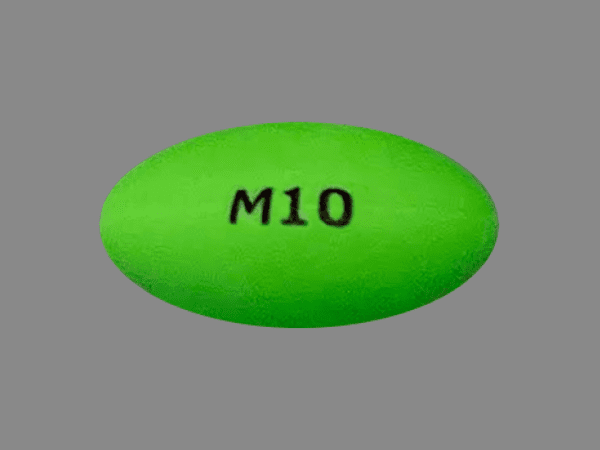Methoxsalen Disease Interactions
There are 7 disease interactions with methoxsalen.
- Aphakia
- Photosensitivity states
- Skin cancer
- Cardiac disease
- Liver disease
- Previous x-ray therapy
- Sunburn
Methoxsalen (applies to methoxsalen) aphakia
Major Potential Hazard, High plausibility.
The use of methoxsalen (a psoralen) with ultraviolet radiation (UVA) is contraindicated in patients with aphakia. The potential for retinal damage with PUVA (psoralen and UVA photochemotherapy) may be increased due to the absence of lenses.
References
- "Product Information. Oxsoralen (methoxsalen)." ICN Pharmaceuticals Inc PROD (2001):
Methoxsalen (applies to methoxsalen) photosensitivity states
Major Potential Hazard, High plausibility. Applicable conditions: Lupus Erythematosus, Porphyria
The use of methoxsalen with ultraviolet radiation is contraindicated in patients with a history of photosensitive disease states. Methoxsalen is a potent photosensitizer that can induce severe burns and marked hyperpigmentation and aging of skin in susceptible patients or when used improperly. Diseases associated with photosensitivity include lupus erythematosus, porphyria cutanea tarda, erythropoietic protoporphyria, variegate porphyria, xeroderma pigmentosum, and albinism.
References
- "Product Information. Oxsoralen (methoxsalen topical)." Apothecon Inc (2022):
- "Product Information. Oxsoralen (methoxsalen)." ICN Pharmaceuticals Inc PROD (2001):
Methoxsalen (applies to methoxsalen) skin cancer
Major Potential Hazard, High plausibility. Applicable conditions: History - Skin Cancer
The use of methoxsalen (a psoralen) with ultraviolet radiation (UVA) is contraindicated in patients with melanoma, invasive squamous cell carcinomas, or a history of melanoma. PUVA (psoralen and UVA photochemotherapy) may be associated with increased risks of squamous cell carcinoma, basal cell carcinoma and melanoma. Methoxsalen markedly enhances skin reactivity to UVA, and exposure to sunlight and/or UVA can cause premature aging of the skin and skin cancer. If necessary, patients with a current or past history of multiple basal cell carcinomas or other nonmelanoma skin cancers may be treated with PUVA but should be carefully monitored. The usual restrictions concerning sun exposure before and after treatment as well as prescribed dosage must be followed closely.
References
- "Product Information. Oxsoralen (methoxsalen topical)." Apothecon Inc (2022):
- "Product Information. Oxsoralen (methoxsalen)." ICN Pharmaceuticals Inc PROD (2001):
Methoxsalen (applies to methoxsalen) cardiac disease
Moderate Potential Hazard, High plausibility. Applicable conditions: Cardiovascular Disease
Patients with cardiac disease may not be able to tolerate prolonged standing or exposure to heat stress required of treatment in a vertical UVA chamber. Therapy with methoxsalen, if used in patients with cardiac disease, may require special precautions.
References
- "Product Information. Oxsoralen (methoxsalen)." ICN Pharmaceuticals Inc PROD (2001):
Methoxsalen (applies to methoxsalen) liver disease
Moderate Potential Hazard, High plausibility.
Patients with hepatic insufficiency should be treated with caution since hepatic biotransformation is necessary for drug urinary excretion.
References
- "Product Information. Oxsoralen (methoxsalen)." ICN Pharmaceuticals Inc PROD (2001):
Methoxsalen (applies to methoxsalen) previous x-ray therapy
Moderate Potential Hazard, High plausibility. Applicable conditions: History - Radiation Therapy
PUVA (psoralen and UVA photochemotherapy) may be associated with increased risks of squamous cell carcinoma, basal cell carcinoma and melanoma. Methoxsalen, a psoralen, markedly enhances skin reactivity to UVA radiation, and exposure to sunlight and/or UVA can cause premature aging of the skin and skin cancer. The total lifetime dose of UVA that can be safely administered has not been established. Therefore, PUVA should be given cautiously in patients with a history of x-ray or grenz ray therapy. Close monitoring for signs of carcinoma is recommended. The usual restrictions concerning sun exposure before and after treatment as well as prescribed dosage must be followed closely.
References
- "Product Information. Oxsoralen (methoxsalen topical)." Apothecon Inc (2022):
- "Product Information. Oxsoralen (methoxsalen)." ICN Pharmaceuticals Inc PROD (2001):
Methoxsalen (applies to methoxsalen) sunburn
Moderate Potential Hazard, High plausibility.
Patients presenting with a sunburn should not be treated with methoxsalen (a psoralen) and ultraviolet radiation (UVA), since it may be difficult to evaluate the response of these patients to therapy. The mild, transient erythema normally seen 24 to 48 hours after PUVA (psoralen and UVA photochemotherapy) indicates a therapeutic interaction occurring between the psoralen and UVA but may be masked by a sunburn. Patients generally should avoid sunbathing for at least 24 hours prior to methoxsalen administration and UVA exposure. The usual restrictions concerning sun exposure after treatment and the prescribed dosage should also be followed closely to avoid severe burns and other phototoxic reactions.
References
- "Product Information. Oxsoralen (methoxsalen topical)." Apothecon Inc (2022):
- "Product Information. Oxsoralen (methoxsalen)." ICN Pharmaceuticals Inc PROD (2001):
Methoxsalen drug interactions
There are 138 drug interactions with methoxsalen.
Methoxsalen alcohol/food interactions
There is 1 alcohol/food interaction with methoxsalen.
More about methoxsalen
- methoxsalen consumer information
- Check interactions
- Compare alternatives
- Pricing & coupons
- Drug images
- Side effects
- Dosage information
- During pregnancy
- Drug class: psoralens
- Breastfeeding
Related treatment guides
Drug Interaction Classification
| Highly clinically significant. Avoid combinations; the risk of the interaction outweighs the benefit. | |
| Moderately clinically significant. Usually avoid combinations; use it only under special circumstances. | |
| Minimally clinically significant. Minimize risk; assess risk and consider an alternative drug, take steps to circumvent the interaction risk and/or institute a monitoring plan. | |
| No interaction information available. |
Further information
Always consult your healthcare provider to ensure the information displayed on this page applies to your personal circumstances.


